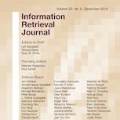This paper investigates a novel intelligent reflecting surface (IRS)-based symbiotic radio (SR) system architecture consisting of a transmitter, an IRS, and an information receiver (IR). The primary transmitter communicates with the IR and at the same time assists the IRS in forwarding information to the IR. Based on the IRS's symbol period, we distinguish two scenarios, namely, commensal SR (CSR) and parasitic SR (PSR), where two different techniques for decoding the IRS signals at the IR are employed. We formulate bit error rate (BER) minimization problems for both scenarios by jointly optimizing the active beamformer at the base station and the phase shifts at the IRS, subject to a minimum primary rate requirement. Specifically, for the CSR scenario, a penalty-based algorithm is proposed to obtain a high-quality solution, where semi-closed-form solutions for the active beamformer and the IRS phase shifts are derived based on Lagrange duality and Majorization-Minimization methods, respectively. For the PSR scenario, we apply a bisection search-based method, successive convex approximation, and difference of convex programming to develop a computationally efficient algorithm, which converges to a locally optimal solution. Simulation results demonstrate the effectiveness of the proposed algorithms and show that the proposed SR techniques are able to achieve a lower BER than benchmark schemes.
翻译:本文探讨由发报机、IRS和一个信息接收器组成的新型智能反映表面共生无线电(SR)系统结构。主发报机与IR通信,同时协助IRS向IR转发信息。根据IRS的符号期,我们区分两种设想方案,即:对IRS的信号采用两种不同的技术来解码IRS的IRS信号。我们为两种设想方案制定了略微误差率(BER)以尽量减少问题,共同优化基地站的主动光束和IRS的阶段转移,但须符合最低基本费率要求。具体地说,对于IRS的假设方案,我们建议采用基于惩罚的算法,以获得高质量的解决办法,即对活跃信号的半封闭式解决办法和IRS阶段的改变,分别根据拉格双向双向双向双向双向双向双向双向双向搜索率,对等相向同步的系统算算法,即对基于当地测算法的双向搜索法,对当地测算法的测算法,对当地测算法的精度和测算法,以显示当地测算法的精度测算法的精度和测算法,这种方法,即:





